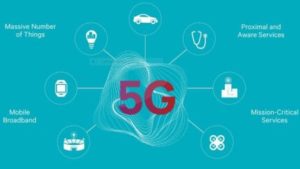Although 5G is still in the early days of definition, there is agreement from operators and industry that it’s not all about boosting the headline data rates to tens of gigabits per second.
One of the key goals for 5G is delivering high data rates to users at the edge of the cell. Today’s 4G phones are limited in coverage and data rate by their ability to transmit the high peak powers required – a problem that ET can solve.
Battery life extension is also listed as a key objective for 5G, which is likely to be even more challenging than 4G.
Benefits of ET for 5G
 High data rates at cell edge
High data rates at cell edge- Increased peak output power
- Mimimal penalty for high PAPR waveforms
- Significant battery life extension
- Enables broadband PAs to cover more bands
Full data rate even at the cell edge
Nujira’s ET solutions can boost the peak PA supply above the battery voltage, allowing significant increases in peak transmit power, without compromising the average efficiency.
ET allows higher order modulations, such as 16-QAM or 64-QAM to be used at peak power output, rather than falling back to lower data rate QPSK signals at the cell edge.
By enabling spectrally efficient higher order modulation schemes to be used over a wider coverage range, ET is a key enabling technology for 5G mobile communications.
Increasing Peak to Average Power Ratio
Although the 5G waveforms are not yet defined, it’s inevitable that they will have a high peak-to-average ratio for increased spectral efficiency and higher data rates. For high data rate waveforms like 256-QAM OFDM, stringent EVM targets of 1.5%-2% require PAPRs of up to 10 dB, resulting in native PA efficiencies as low as 10% – similar to today’s 802.11ac WiFi.
When used with high data rate waveforms, Nujira’s ET ICs can cut PA energy consumption by up to 80%.
